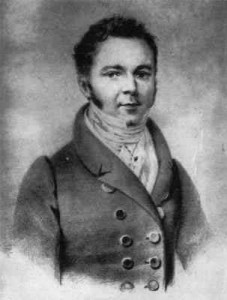 Seven years younger than Beethoven, 13 years older than Schubert, the grandson of the first Earl of Onslow was born and died in south-central France. From this unlikely place came music much praised by Berlioz in its day, then forgotten.
Seven years younger than Beethoven, 13 years older than Schubert, the grandson of the first Earl of Onslow was born and died in south-central France. From this unlikely place came music much praised by Berlioz in its day, then forgotten.
- Classical Music 101: What Does A Conductor Do? - June 17, 2019
- Classical Music 101 | What Does Period Instrument Mean? - May 6, 2019
- CLASSICAL MUSIC 101 | What Does It Mean To Be In Tune? - April 23, 2019
George Onslow’s father had left England because of a scandal, settling the family in Clermont-Ferrand.
The son, born in 1784, was talented musically and, after the French Revolution made things uncomfortable for aristocratic families, the Onslows made a long, itinerant circle around Europe before returning to France when passions had calmed.
As his biographers on the information-packed George Onslow website point out, this gave George the opportunity to study piano with several great teachers, something the family considered part of a well-rounded education. He did not think of becoming a composer until he was 22.
At that point, he turned to Anton Reicha for instruction.
Although he wrote four symphonies and three operas that were produced at the Salle Favart in Paris, Onslow’s specialty was music for people to play privately, a legacy that includes 36 quartets and 34 quintets. He also wrote songs and some music for solo piano (the difficulty of which suggests he was an excellent pianist).
Onslow may have the distinction of being one of the rare composers to depict in music personal injury from a bullet and the difficult, incomplete recovery.
My dusty old 10th edition of the Oxford Companion to Music has little to say about Onslow, but includes a good anecdote:
In the 1820s, while on a hunt, Onslow “sat down to record a musical theme that had just come into his head, when a bullet struck him and injured his ear, leaving him ever after partially deaf. The theme was later worked up into a quintet (The Bullet Quintet) of which each portion represented some stage in the illness his accident had brought him, as ‘Fever and Delirium,’ ‘Convalescence,’ ‘Cure,’ and the like. In his fifties he inherited a great fortune and was also elected to the Institute of France in succession to (Luigi) Cherubini. His compositions, which once had frequent performance, are now unheard, except, rarely, a few of those for chamber combinations.
Onslow died in Clermont in 1853 — 160 years ago. It’s not an anniversary number, but a perfectly fine excuse to check out some of his music.
Here is a fully felt interpretation of the Bullet Quintet — Op. 38, from 1829 — by violinists Dimiter Ivanov and Roberto Castellani, violist Martino Piroddi, cellist Robert Witt and Sandro Fontoni bass:
Onslow’s four symphonies are pretty uneven. The one I think is the most consistent and nicely developed is his Symphony No. 2, Op. 42, completed in 1831. It is conducted here by Johaness Goritzki with the Radio-Philharmonie NDR:
For a moment of unbridled exuberance, this is the third movement of a youthful Duo No. 1 for one piano, four hands, Op. 7, played by Laurent Martin and Thierry Ravassard:
To get a bit of an idea of what chamber music would have sounded like in his day, here is the period-instrument-playing Nepomuk Fortepiano Quintet with the final movement of Onslow’s late Piano Quintet, Op. 79bis, from 1851:
John Terauds
- Classical Music 101: What Does A Conductor Do? - June 17, 2019
- Classical Music 101 | What Does Period Instrument Mean? - May 6, 2019
- CLASSICAL MUSIC 101 | What Does It Mean To Be In Tune? - April 23, 2019



